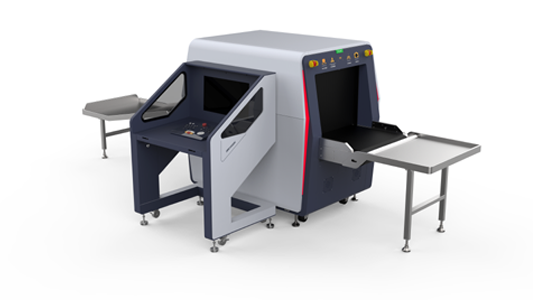Hikvision has recently launched a new range of X-Ray Baggage and AI Based Parcel Inspection System, by introducing Artificial Intelligence(AI) algorithm based parcel inspection system. It is an innovation in the X-Ray Baggage scanner product segment and the product stands out as a best-in-class solution.
Security inspection process are required in all important public places, especially in verticals such as aviation, building facilities, borders etc. The most important applications in the security inspection process including object and person screening.
Lack of Video and Data Records
In many checkpoints, we see X-ray inspection systems for baggage checking, walk-through person screening systems for human body checking and handheld devices for double checking passengers. More complicated solutions in airports and customs will include devices for explosives and narcotics detection.
Most of the checkpoints we see today rely on human employees with no data sent to a centralised location where it can be collated and used as part of a managed service. If a crisis occurs requiring more complex security analysis, the lack of video and other data records make the subsequent analysis challenging.
Bringing AI technology to security inspections
Based on traditional security inspection products, Hikvision developed a new security analyser, the ISD-ST204D, which uses artificial intelligence to empower traditional X-ray inspection systems with vastly improved threat identification capabilities.
Backed up by a database with a large number of threat images which were used to train the AI, the Hikvision security analyser can recognise more than 15 classes of material and more than 50 threats, including guns, knives, gas spray cans, liquid bottles, batteries etc. It also recognises electronics devices such as laptops, cellphones etc.
This new AI algorithm can also output the names of threats it recognises with a high degree of accuracy to support security guards in identifying weapons more quickly and efficiently.
Advanced Features
Threat Identification: Identification of advanced material properties such as effective atomic number for accurate material discrimination of organic, inorganic or metal objects based on Standard Colour coding.
AI Recognition: Intelligent Threat Recognition Technology, a deep learning recognition algorithm with full independent intellectual property rights, which realizes the integration of intelligent recognition algorithm and X-ray imaging software, and achieves better identification of potential threats.
Video Linkage: The system has an in-built camera with video recorder. It has more channel to show an operator’s video.
Reliable Performance and Safety: Amazing image quality,double lead curtain design effectively provides extra shielding to minimize radiation leakage.
Characteristic Function: speed can be changed according to the scene,supports access to Hik-central, and implement the data upload,Data storage supports local storage, view and playback of the images and alarm information.
Login Options: Supports login with face and fingerprint authentication.
Hikvision X-Ray Baggage & Parcel Inspection System support detection of prohibited things by deep learning algorithm. It supports detection of 15 kinds of prohibited things, including Guns (Standard Gun, Non-standard Gun, Components), Knives (Restricted Knifes, Daily Knives, Military Knives), Bottled Liquid, Battery, Umbrella, Laptop, Cellphone, Aerosole Can, Scissor and Lighter.
Correlating people with threats
For baggage checking, Hikvision provides the X-ray inspection systems with penetration rates of up to 40 mm and recognises images with wire resolution rates up to 40 AWG. Supported by advanced hardware and cutting-edge imaging algorithms, Hikvision X-ray inspection systems provide high-level performance in any environment.
Video technology has also been included to improve crisis event management. The company provides four video channels on the analyser to provide videos of baggage holders, operators and the surrounding environment. Any images that detect prohibited items can be correlated with the video record of the passengers and operators on the scene. Security users can search these video records by threat types, dates and time, to find records easily and even export the video if they have permission. Crisis events now do not have to rely only on handwritten notes and operator testimony.













